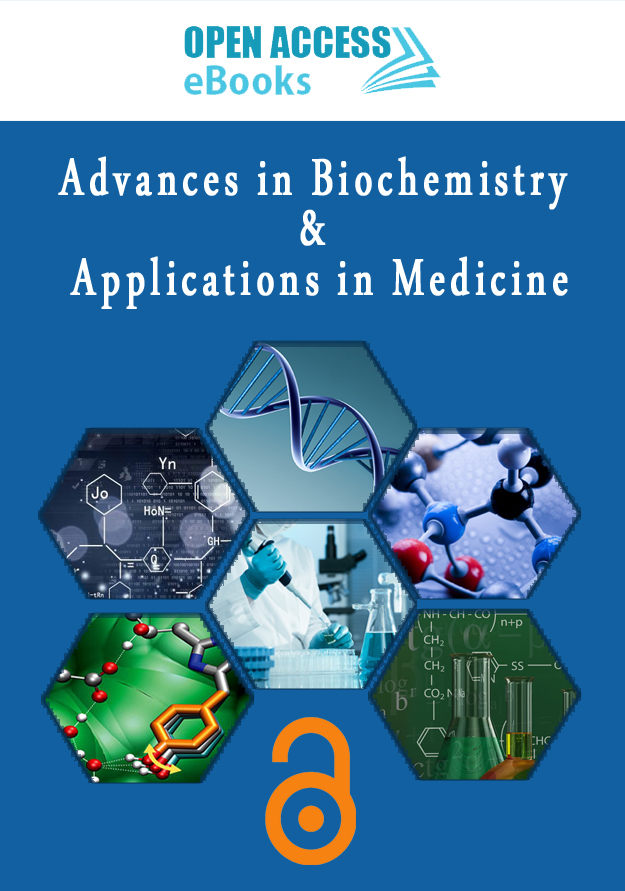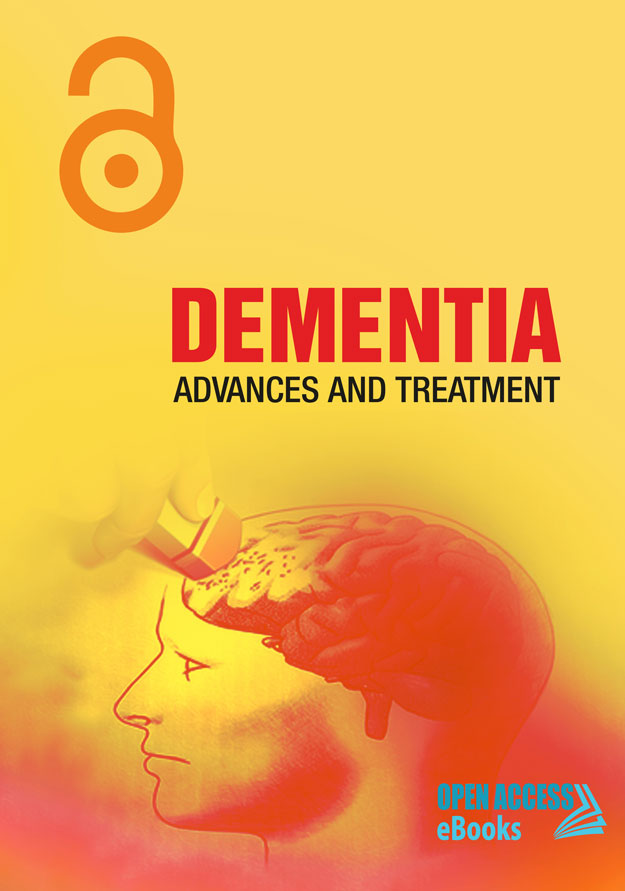
Volume 2
ISBN: 978-93-87500-19-8
Editors:
1. Rojeet Shrestha
Biochemistry, also called as Biological Chemistry is the study of chemical processes of living organisms. It is a branch of science using chemical knowledge to understand and solve biological problems. Biochemistry has various applications in medicine and researchers are invited to submit their valuable work for the possible publication in an eBook entitled ADVANCES IN BIOCHEMISTRY & APPLICATIONS IN MEDICINE.
Benefits of publishing with us:
Universal Access: eBooks published in Open Access eBooks gain international visibility. No region barriers and content is accessed by everyone across the world from our website. We also deposit published eBooks in different databases.
Freely Available: Open Access eBooks follows the principles of Open Access and the content is available to the readers without any cost. Readers can read, share, and store the published ebooks/book chapters.
Copyright with Authors: As an eBook publisher, we serve researchers in publishing their valuable work after the stringent review process. However, copyright lies with authors. We follow the CC-BY-NC-ND license (https://creativecommons.org/licenses/by-nc-nd/3.0/).
Different Formats: We provide eBooks in PDF and HTML formats. Both formats are user friendly and can act as per the user requirements. We put our efforts to provide other formats in future.
For more information, contact info@openaccessebooks.com
Published Chapters:
Application of Hydrogen/Deuterium Exchange Mass Spectrometry in Structural Biology and Molecular Medicine
Author(s): Bindu Y Srinivasu; Amit Kumar Mandal*
In last two decades soft ionization method in mass spectrometry has emerged as a powerful biophysical tool to study the structure of biological macromolecules such as proteins. Two ionization methods, electrospray ionization mass spectrometry (ESI-MS) and matrix assisted laser desorption ionization mass spectrometry (MALDI-MS) were discovered independently by two research groups in 1980s. Although both of these methods have been extensively used in the analysis of primary structure of proteins in the domain of proteomics research, the isotope exchange chemistry of macromolecules monitored through soft ionization based MS made it feasible to study the functionally active three dimensional structure of proteins without any limit to its size, structural complexity and state of purity.
Transdermal delivery of Drugs using biocompatible hydrogels and microneedles
Author(s): Kumari Anupam; Archana Bhatnagar*
Transdermal delivery represents an attractive alternative to oral delivery of drugs and is poised to provide a substitute to hypodermic injection too. People have practiced transdermal delivery for thousands of years by placing topical drugs or formulations on the skin for remedial effects. This practice is still in use in current era and large number of topical formulations are available for local curative effects [1].
Obesity and Endocannabinoids
Author(s): Soumita Ghosh
In the modern-day world, obesity and its associated metabolic disorders like Type 2 Diabetes (T2DM) and other metabolic syndromes have skyrocketed and pose a serious global public health concern as seen in Fig 1. In United States, two thirds of the population are obese [1,2]. The problem of obesity not only exists in prosperous countries but is also present in developing countries like Mexico, China and Thailand [3] and hence serious interventions are required to solve this problem that exists across the world. According to National Institute of Health (NIH), obesity is complex and multifactorial condition. It is also considered as a condition of excess energy stores [4] (NIH). According to the definition of World Health Organization (WHO); in adults, “overweight” is defined as Body Mass Index (BMI) between 25-29.9 while “obesity” is defined by BMI greater than 30kg/m2 [5]. BMI is defined as persons weight divided by his or her height in meters squared. It is known to correlate with percentage body fat in human subjects [6,7], however sometimes not considered a sufficient parameter [8]. Often waist circumference is also considered as a marker for obesity.
Childhood Obesity, an Emerging Threat to Global Public Health: A Neutraceutical Approach to Contain
Author(s): Muni Swamy Ganjayi; Dasari Sreenivasulu; Balaji Meriga*
Global health reports indicate alarming levels of childhood obesity (CHOB) in recent decades across the world. Childhood obesity (CHOB) has a significant impact on both physical and psychological health and is a known precursor to metabolic disorders in adulthood. Apart from genetic aspects, changed lifestyle preferences, environmental factors, food habits, cultural aspects and declining physical activity are the prime causes of rising prevalence of obesity world over. In most populous and developing countries like China and India increased purchasing capacity of the middle classes, increased publicity and mushrooming of fast food centres, supermarkets, attraction of the children towards fried-roasted foods, increased conveyance facility and information technology has direct impact on food habits and contributed to growing over weight-obesity.
Multidrug Resistance Proteins: A Family of ATP Dependent Transporters and their Role in Cancer
Author(s): Naresh Kumar; Raghavendra M; Jayanti Tokas*; Hari Ram Singal
Multidrug resistance (MDR) or chemo-resistance is a serious phenomenon utilized by cancer cells that hinder the success of cancer chemotherapy. Owing to the chemo-resistance to antineoplastic drugs, either by acquired or intrinsic mechanisms, the 5-year survival rates remain dismal despite the significant advances in the field of chemotherapy [1]. This was first demonstrated in 1973, where it was found that Ehrlich ascites cells lowered the intracellular daunorubicin concentration by active outward transport [2]. Later it was discovered that the large glycoprotein, now known as multidrug resistance proteins (MRP), in the plasma membrane of MDR cells is responsible for the active outward transport of antineoplastic drugs [3, 4]. The identification of drugs and conjugates efflux pumps of MRP family was started with the discovery of MRP1 in 1992 [5].
Sirtuins: Its Role in Metabolic Homeostasis
Author(s): Midathala Raghavendra; Naresh Kumar; Jayanti Tokas*; Hari Ram Singal
Sirtuin proteins are evolutionarily conserved enzymes that function in critical cellular processes such as DNA repair, transcription and stress resistance. The name Sirtuin (Sir2) is derived from the yeast gene silent information regulator which is responsible for controlled expression of the silent mating type loci and also required for telomere hyper cluster formation in quiescent yeast cells [1]. It was not until fifteen years later the significance of sir2 proteins was identified as beta-nicotinamide adenine dinucleotide (NAD)-dependent histone deacetylases, which deacetylate lysine at a specific site and accounts for silencing, recombination suppression, apoptosis, mitochondrial biogenesis, lipid metabolism, and extension of life span in-vivo [2,3]. The sirtuins were originally classified as histone deacetylases but many non-histone targets are described recently.


